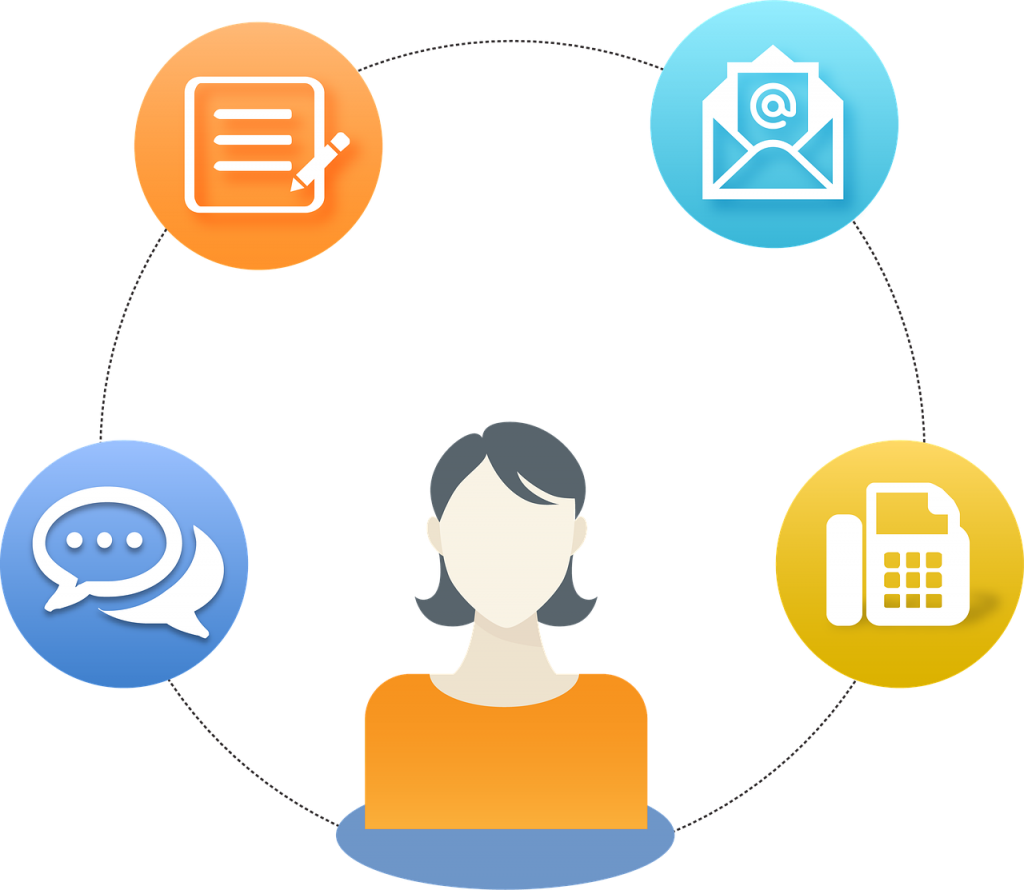(This is the second part of a two-part post on Building Your Online Presence As A Non-Profit Organisation. If you haven’t read part 1 yet, click here)
In part 1 of the “Ultimate Beginner’s Guide To Building Your Online Presence As A Non-Profit Organisation,” we covered the ins and outs of building a website and delved a bit into driving traffic with Google.
In part 2, we will now cover other methods of getting visitors to your website and how to keep them coming back.
1. Driving visitors to your non-profit website
To continue from part 1 of the “Ultimate Beginner’s Guide To Building Your Online Presence As A Non-Profit Organisation,” here are other ways of generating traffic to your website.

A. Facebook
Free
You probably already know about the power of social media – perhaps you have a page already.
If not, there’s no need to create a new account for your page.
Go to Facebook’s Page Creation here, and select the option that suits your organisation (in most cases, you’ll want to pick Company, Organisation or Institution and select “Charity” from the drop down box)
If you’d like to learn how to create Facebook content that gets shared and liked, we’ve written up an article here on How NFPs Can Create Engaging Facebook Content That Gets More Shares And Likes.
Paid
While Facebook Advertising is beyond the scope of this article – we will briefly cover the over-arcing principles.
Firstly, Facebook Advertising can be very effective – but only when it is done correctly.
We can simplify the entire process into two key steps: targeting and the call to action.
Targeting refers to who you want your ads to be seen by – naturally this should be aligned with your target audience.
For example, if you want to drive donations from Facebook and you know your top donors (that you have currently) consist of women aged 45+, you’ll want to make sure these are the people your ads are reaching.
You may add another layer of targeting in the “Audience Interests” section, and focus on targeting people who have shown an interest in non-profit organisations or charities.
Start your advertising with a narrow audience (around 50 – 100k) and expand from there.
The Call To Action refers to the result you want from your ad campaigns.
For example, if you wanted more donations your call to action might be: get your visitors to click into your donations page on your website and click the donation button.
Your Ad copy and image should be congruent with this call to action, and lead the reader to click through to your website.
Also ensure you are running Retargeting ads. These ads enable you to show more advertising to those who may have seen your ad, but not taken any action.
Rather than “losing” these people, it is better to retarget them with another ad and attempt to get them to respond to your call to action.
This almost always ends up making the cost of acquiring a new donor / client far much cheaper, than acquiring a brand new donor / client.
This will require you to install what’s called a Facebook Pixel on your website (a little piece of code that “tracks” when a person visits your website. This “tracker” allows you to retarget these specific people with new ads).
We recommend hiring an expert to run Facebook Ads, as there are many technical facets to this and you can easily burn through your marketing budget if done incorrectly.
We have written an article on optimising your website for paid advertising here.
C. LinkedIn
LinkedIn is similar to Facebook but contains mostly business owners and professionals.
Sometimes, using LinkedIn can be better than using Facebook if you wish to connect with business owners or professionals since they allow you to target by industry or occupation.
For example, if you were trying to get a sponsor for an event or your organisation, LinkedIn may yield better results than Facebook.
The LinkedIn social system is a little different from Facebook in that you need to network with people to expand your list.
However, the advantage of this is that you can connect with business owners and professionals who may be able to sponsor your organisation or connect you to potential sponsors.
Again, we recommend getting a LinkedIn professional to help you with any paid advertising efforts.
D. Joint Ventures
Doing a joint venture means working with another organisation or business to send traffic to one another.
This is usually done in a mutually beneficial way that works for both the non-profit organisation, partner and people being referred.
For example, a non-profit for cancers could work together with a medical institution that consults for those with cancers.
This would be mutually beneficial to both groups and for the patients themselves:
New visitors who searched for the non-profit site for cancer support, could be directed to the medical institution for consultations.
On the other hand, cancer patients from the medical institution could be directed to the non-profit site to find support groups and community information.
In this way, website traffic can be “shared” by having links to your partners and having them link back to you.
You will need to exercise some creativity to figure out what companies or organisations you could share a mutually beneficial relationship with, then approach them with a joint venture offer.
E. Offline to Online
If you have offline publications (like newsletters or direct mail) that goes out to your list, you can direct these readers to your website.
Most non-profits simply add their homepage website URL to their physical media, almost as an after-thought.
We don’t recommend doing this as it is very ineffective.
Instead, make sure you have a specific goal in mind for your call to action (e.g. signing up an online version of your newsletter to be sent out via email).
Then use your offline media to drive readers to a specific web page, built only to gather emails from people interested in the e-newsletter (going off the example given above).
If you have a different call to action in mind, you should lead the visitor to a specific page built for this particular purpose only (so NOT your generic homepage).
Do not send them to your general homepage and expect the user to browse through your website and find the relevant information.
This is very ineffective and will result in losing hundreds of potential visitors.
3. Getting visitors to return to your website
Once you have plenty of traffic coming to your website, the next challenge is to keep these users coming back.
After all, its no use spending resources to get new visitors to your website, only to have them never return again.
A. Build an email list using a CRM
Whenever a user visits your website, your primary goal should be to try and capture their information (at the very least, email and full name).
This is critically important as having a consistent stream of communication (over multiple mediums, email, Facebook, offline etc.) will develop a long lasting relationship.
It also means you have multiple chances at winning the person over to your cause.
This is usually achieved by integrating your website to an email CRM service such as Mailchimp, GetResponse, AWeber etc.
We personally use Mailchimp at Web 105, and recommend this service to most NFPs as it is free to use, for up to 500 subscribers (then incrementally increases in price as your subscriber count increases).
It also features an easy-to-use interface so you can quickly build your lists and create email campaigns for your subscribers.
You should view your Email List as a valuable asset to your organisation as it allows you to generate awareness for events, gather donations, inspire volunteerism and continue the relationship into the future.
If you would like to know more about building relationships online with your subscribers, click here.
B. Social Media
We mentioned using social media to generate traffic in the previous section.
However, it can also be used to re-direct those who have liked your page or have connected with you, back to your website.
This should be done in a targeted way, with a specific goal in mind.
For example, if you have an upcoming event, you should contact your social media followers, then direct them to the specific page that contains the sign up forms for the event.
Again, avoid sending people to your generic homepage, expecting them to find the event forms themselves!
This will result in losing many of your visitors, as most people simply do not want to take the time to do this.
We also recommend making the same social media post more than once if it is an important announcement.
Often your entire social media base will not see your message the first time around, so it pays to do multiple posts over time (but don’t spam them).
C. Post articles and fresh content
Another way to get users to regularly come back to your website is to post regular, interesting content.
This could be news related, general non-profit news or specific articles that convey your organisation’s vision.
Having a cause to get behind will get someone to visit your website – but you must also reinforce that cause, by continuously keeping an “open line of communication” with your visitors.
Articles also have the advantage of being shared on social media by readers, so it definitely can pay to have a good article writer in your team.
You can also use evergreen (content that is not time-sensitive and will always remain relevant) articles to have a constant stream traffic coming from search engine sources like Google.
However, it will also pay to have someone who is knowledgeable in SEO (Search Engine Optimisation) to ensure your articles get correctly indexed and ranked in Google. If you’d like help with getting your NFP ranked in Google, please get in touch with us as we can help you.
We have written up an article on the “Top 10 Tips That Will Help Your Articles Get Read And Shared” here.
4. Ask for Referrals
Lastly, we recommend using your email and social media (and offline list if you have one) base to ask for referrals from happy donors.
The reason you must ask for these referrals, is because most people (even satisfied, happy donors) will not refer your organisation to others, unless asked to do so.
They are usually quite happy to refer you – but they simply won’t unless you ask them.
This is the area most NFPs do not realise that there is a huge potential to further build up their base of existing newsletter subscribers and boost donations through new donors.
We recommending using the sources of traffic and CRMs / social media to build a following, then ask for referrals through either email or with physical mail.
You should note that physical mail will get much higher responses compared to email, due to the inherent nature of the channels themselves (most people’s email boxes get clogged with spam every day. In comparison, we don’t get nearly as much junk mail as we would get spam email online).
We hope you got some new ideas to boost your online presence and build your donor base with our “Ultimate Beginner’s Guide To Building Your Online Presence As A Non-Profit Organisation.”
If you’d like help from a team of professionals in building your online presence,
and generate traffic for your non-profit organisation,
please get in touch with us here – we’d love to chat with you about your requirements and assist you in any way we can!



